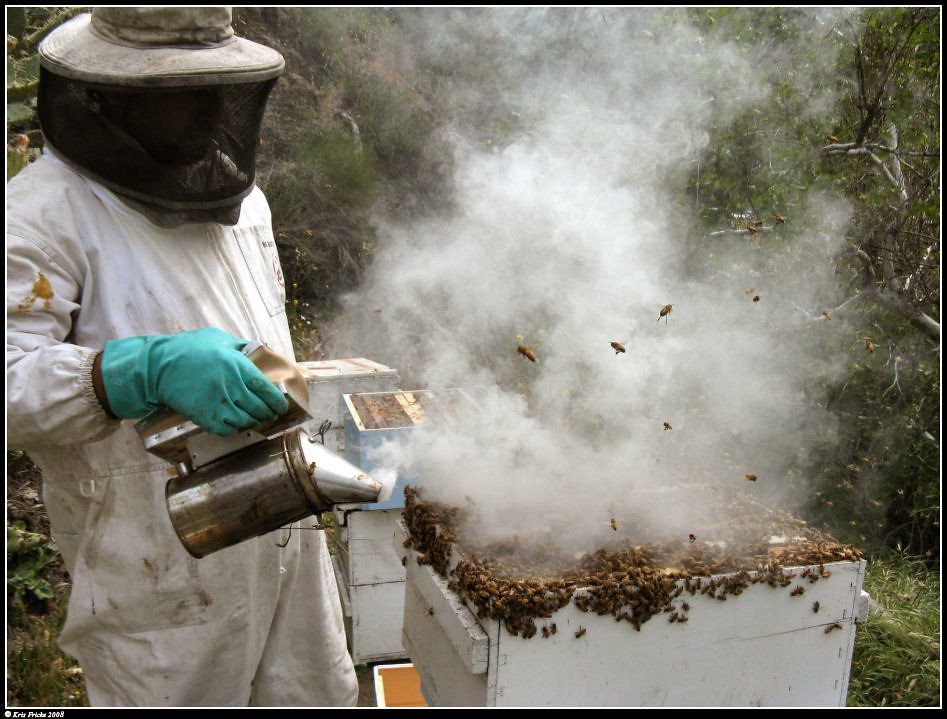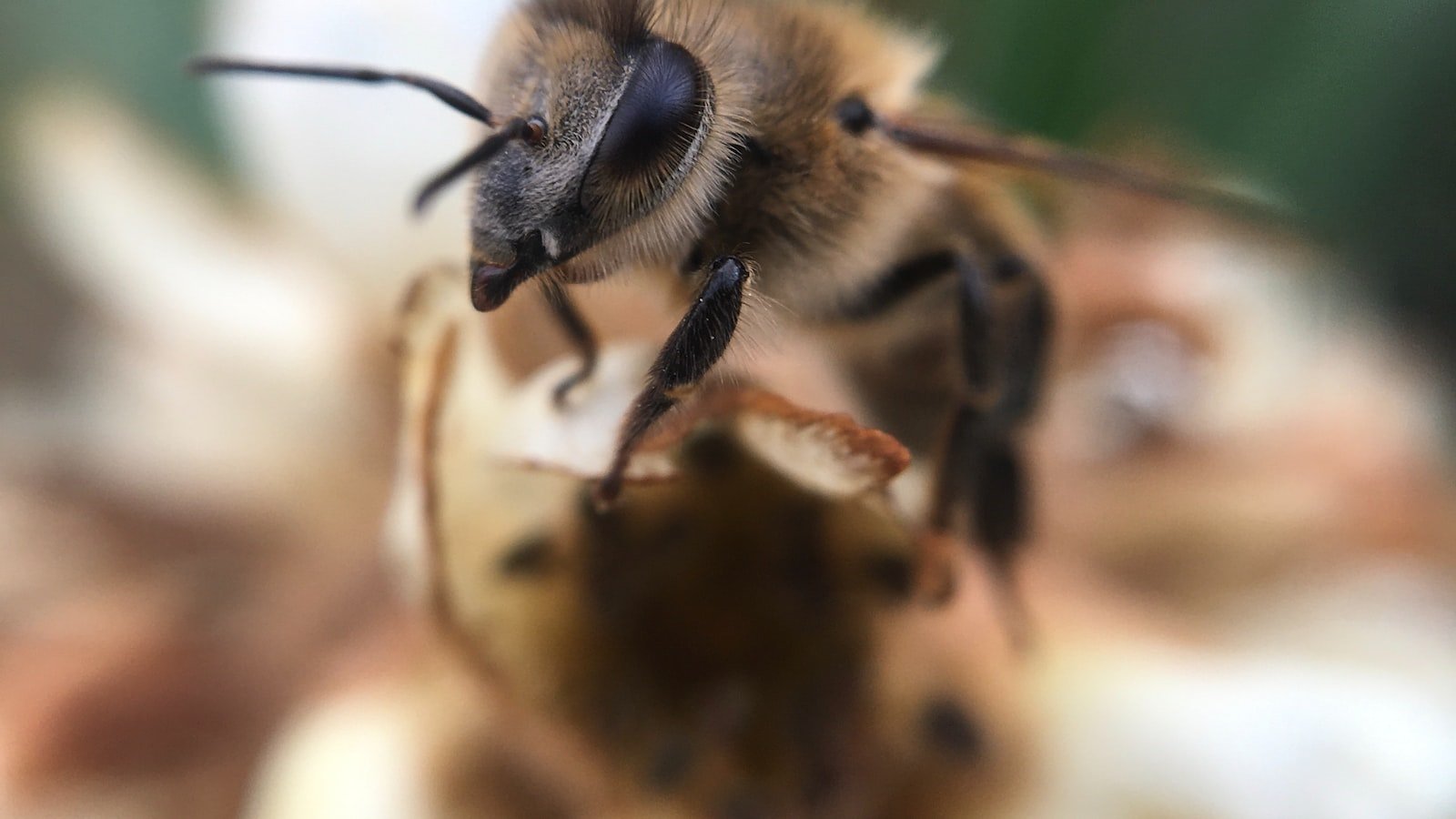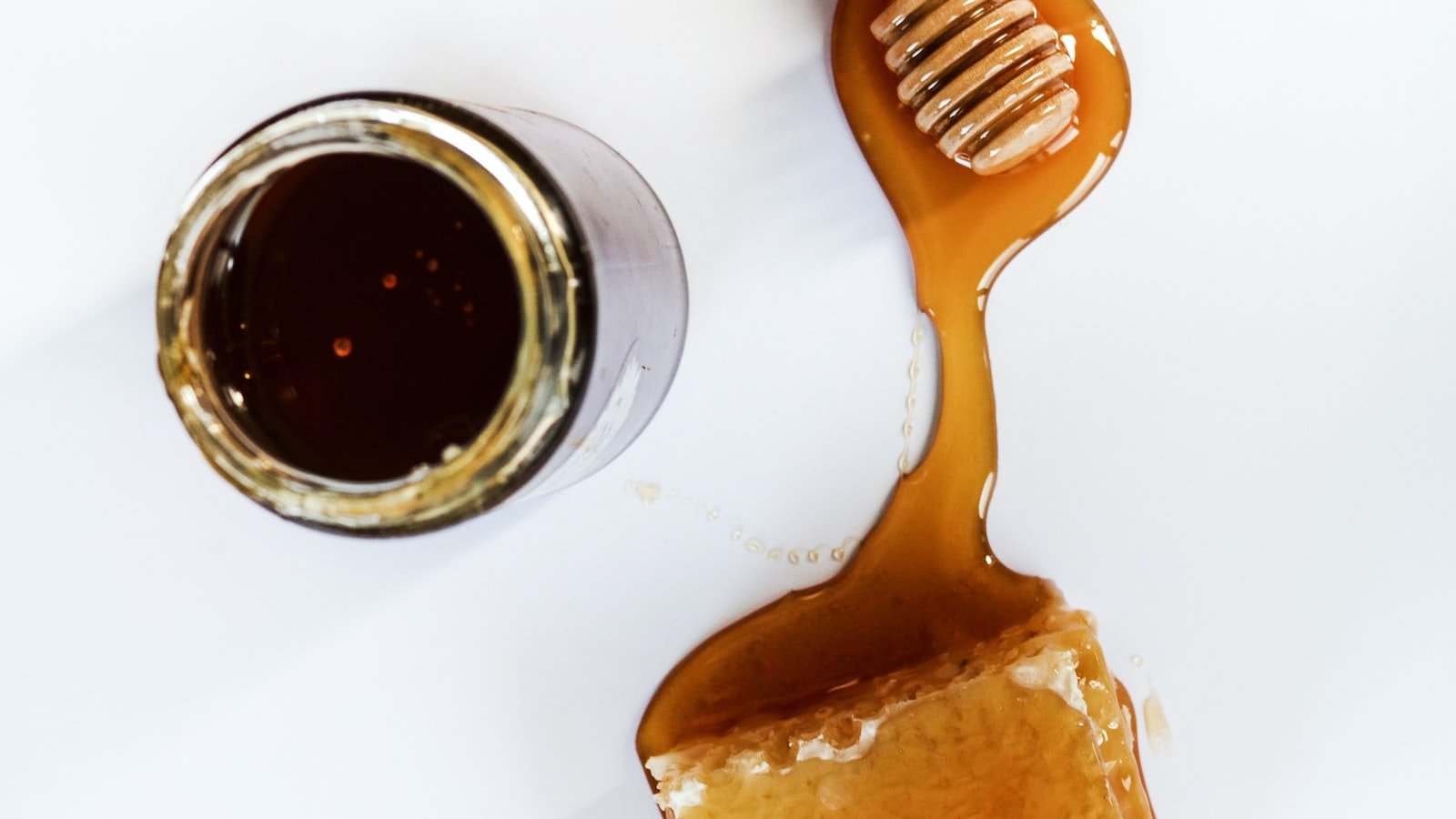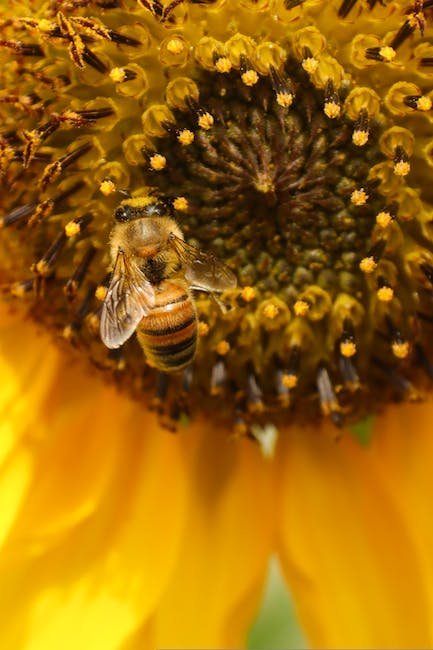In the intricate tapestry of nature’s grand design, a group of tireless winged creatures takes center stage, weaving their invisible threads of communication throughout the world. The humble but mighty bees, nature’s diligent pollinators, hold a secret language that allows them to fulfill their vital role in ensuring the reproduction of countless plant species. As they flutter from blossom to blossom, these remarkable insects go beyond mere pollination, utilizing their intricate communication techniques to optimize efficiency, navigate complex environments, and orchestrate a symphony that sustains the very fabric of our ecosystems. Today, we embark on an exploration of the captivating world of bee communication, unravelling the mysteries behind their buzzing conversations and shedding light on the profound significance of this mesmerizing dance for the survival and flourishing of life on Earth.
Table of Contents
- The Power of Bee Communication: Unlocking the Secrets of Successful Pollination Efforts
- Exploring the Intricate Dance Language of Bees: How They Coordinate and Convey Information
- Key Factors Affecting Bee Communication and Their Impact on Pollination
- Harnessing Bee Communication for Effective Pollination: Strategies and Best Practices
- Preserving and Promoting Bee Communication: A Call to Action for Sustainable Pollination
- Q&A
- The Conclusion

The Power of Bee Communication: Unlocking the Secrets of Successful Pollination Efforts
Did you know that bees are master communicators? These tiny buzzing creatures have a sophisticated system of communication that plays a crucial role in the success of pollination efforts. By unlocking the secrets of their communication, scientists hope to gain a deeper understanding of how to improve and protect our ecosystems.
One fascinating aspect of bee communication is their ability to perform a waggle dance. This dance, performed by worker bees inside the hive, helps them relay information about the location and quality of food sources to their fellow colony members. By performing specific movements and patterns, they can communicate the direction, distance, and even the type of flowers to visit. It’s an incredible display of teamwork and coordination that ensures the efficient and effective pollination of plants.
Furthermore, bees communicate through chemical signals known as pheromones. Queen bees release pheromones to assert their dominance and maintain order within the hive. These signals also help attract mate-seeking drones and alert worker bees to important tasks. By identifying and understanding these pheromones, scientists hope to manipulate and improve pollination efforts in agricultural settings, leading to increased crop yields and food production.
In addition to dance and chemical signals, bees also communicate through vibrations and sounds. They generate specific buzzing sounds during the process of pollination, which not only attracts other bees to the activity but also helps dislodge highly coveted pollen grains from flowers. This clever strategy ensures a greater chance of successful pollination, benefiting both plants and bees alike.

Exploring the Intricate Dance Language of Bees: How They Coordinate and Convey Information
Bees have long been known for their exceptional communication skills, expressed through their intricate dance language. The complexity of their movements allows them to coordinate and convey vital information within their colonies, serving as a highly efficient communication system. The dance language of bees not only showcases their intelligence but also reveals their ability to adapt and survive in the ever-changing world of the hive.
Through dance, bees convey various types of information, such as the location of food sources, water, or potential new nest sites. One fascinating dance performed by worker bees is the “round” dance, where they move in a circular pattern on the comb. This dance indicates that the food source is nearby, within a radius of 50 meters, and doesn’t require specific direction. Bees performing the “round” dance communicate the existence of a valuable food resource and prompt other workers to join the search.
On the other hand, the “waggle” dance is a remarkable display of precision and detail. By waggling their bodies from side to side and making audible sounds, bees can convey the exact direction and distance of a distant food source or new nesting place. Through the duration and intensity of their dance, they provide fellow bees with crucial information, including the angle of flight in relation to the sun and the distance covered. This incredibly sophisticated form of communication allows the colony to efficiently allocate their foraging efforts and adapt to changes in their environment.

Key Factors Affecting Bee Communication and Their Impact on Pollination
Bee communication plays a critical role in pollination and ultimately impacts the health and productivity of our ecosystems. Understanding the key factors affecting this communication is essential for scientists and researchers in order to protect these important pollinators and ensure successful pollination processes.
One of the main factors that affects bee communication is the presence of pesticides in their environment. Pesticides can disrupt the bees’ ability to communicate effectively, as they impair their cognitive functions and memory. This can lead to confusion among bees when trying to navigate and find food sources, ultimately affecting their ability to pollinate plants.
Another factor that influences bee communication is the loss of habitat and fragmentation. Bees rely on specific environmental cues, such as the availability of different flower types and scents, to communicate and navigate their surroundings. However, with the destruction of natural habitats and the fragmentation of landscapes, bees face challenges in finding and accessing these essential resources. As a result, their communication networks can be disrupted, impacting their ability to communicate vital information to the colony and affecting their overall pollination efforts.
- Climate change: Climate change is also a key factor affecting bee communication. Shifts in temperature and weather patterns can disrupt the availability and timing of flower blooms, which bees depend on for food. As a result, bees may struggle to communicate to each other about the location and availability of these essential resources, leading to decreased pollination rates.
- Loss of biodiversity: The loss of plant species diversity in an area can also hinder bee communication. Bees rely on a wide variety of flowers for pollen and nectar sources. When these resources become limited due to a decline in biodiversity, bees may struggle to communicate their findings to other bees, which could result in reduced foraging efficiency and pollination.
By recognizing and addressing these key factors affecting bee communication, we can take steps towards preserving and enhancing the important role that bees play in pollination. Ensuring the continuation of effective bee communication networks is crucial for sustaining healthy ecosystems and safeguarding our food supply.

Harnessing Bee Communication for Effective Pollination: Strategies and Best Practices
In the realm of pollination, bees play a paramount role as nature’s most efficient messengers. Their ability to communicate is not only fascinating but also vital for effective pollination strategies. Understanding the mechanisms of bee communication can provide invaluable insights into fostering better crop yields and maintaining healthy ecosystems.
Strategies for Harnessing Bee Communication:
- Creating diverse habitats: Offering a range of flowering plants throughout the year ensures that bees have access to a continuous and varied food source. This encourages them to communicate and forage more efficiently.
- Conserving native bee populations: By protecting natural habitats and minimizing pesticide use, we can preserve and enhance populations of native bee species. These bees have evolved complex communication systems that are finely tuned to local plant communities.
- Using pheromones: Pheromones are chemical signals released by bees to communicate various messages. Synthetic versions of these compounds can be strategically deployed to attract bees to specific flowering areas or optimize pollination in agricultural settings.
Best Practices in Bee Communication:
- Employing visual cues: Incorporating a variety of colors and shapes in flower gardens can attract bees and aid in their communication. Bright colors and distinct patterns act as visual signals, guiding bees to flowers and facilitating efficient pollination.
- Creating nesting sites: Providing shelter and nesting opportunities for bees is crucial for their survival. By offering hollow stems, log piles, or nesting boxes, we can encourage their presence and foster their communication networks.
- Maintaining a chemical-free environment: Pesticide usage should be minimized to protect the delicate communication systems of bees. Switching to organic farming methods or using integrated pest management techniques can create a safer environment for both bees and other pollinators.
By harnessing the power of bee communication, we can unlock the secret language of nature and enhance the efficiency of pollination. Implementing these strategies and best practices not only benefits our crops but also supports the delicate balance of our ecosystem and contributes to the sustainable future of our planet.
Preserving and Promoting Bee Communication: A Call to Action for Sustainable Pollination
Bee communication is an intricate and mesmerizing dance that lies at the heart of sustainable pollination. Sadly, this unique form of communication is increasingly under threat due to various environmental factors and human activities.
To ensure the continued success of pollination and preserve the delicate balance of our ecosystems, action is needed. Here are a few steps we can take to support bee communication:
- Protect Their Habitat: Bees rely on diverse and healthy environments to communicate effectively. By preserving and restoring their natural habitats, we can provide them with the resources they need to thrive and maintain their intricate social systems.
- Reduce Pesticide Use: Pesticides can disrupt bee communication and navigation, leading to confusion and disarray within their colonies. Embracing organic and sustainable farming practices can minimize the harmful impact of chemicals on these fascinating creatures.
- Promote Native Plant Species: Bees have evolved alongside specific plant species, forming unique pollination patterns. By cultivating and supporting native plants in our gardens and landscapes, we provide bees with familiar food sources, strengthening their communication networks.
- Raise Awareness: Educating ourselves and others about the importance of bee communication is crucial. Whether it’s through community initiatives, educational campaigns, or simply spreading the word, we can inspire more individuals to join the cause and create a sustainable future for pollinators.
Preserving and promoting bee communication is not just a matter of protecting a species. It is a call to action for the preservation of biodiversity, the maintenance of our food systems, and the resilience of our ecosystems. Together, let’s listen to the buzzing harmony and support the vital role bees play in our world.
Q&A
Why is bee communication important in pollination?
Bee communication is crucial in pollination as it allows bees to share information about the location and quality of food sources. Through intricate dances, pheromones, and buzzing vibrations, bees can communicate the direction, distance, and type of flowers to other members of their colony, ensuring effective pollination.
How do bees communicate the location of food sources?
Bees perform a mesmerizing dance known as the “waggle dance” to communicate the location of food sources. By moving in a figure-eight pattern and vigorously shaking their abdomens, these diligent insects convey information such as the direction, distance, and even the quality of the nectar or pollen they have found.
What are pheromones and how do bees use them to communicate?
Pheromones are chemical substances produced and secreted by bees to communicate with one another. For instance, when a forager bee discovers a rich food source, it will release a pheromone that attracts and guides other bees to that location, ensuring a harmonious and efficient effort in pollination.
Why do bees use buzzing vibrations to communicate?
Bees use buzzing vibrations as a form of communication to signal various messages within their colony. By vibrating their wing muscles at specific frequencies, bees are able to transmit information about the quality of food sources, potential threats, or even the need for assistance, strengthening the coordination and cooperation among the hive members.
What happens if bee communication is disrupted?
If bee communication is disrupted, it can have severe consequences for pollination. Bees may struggle to find food sources efficiently, resulting in decreased reproduction for plants that rely on their pollination services. Disruptions, such as pesticide exposure or habitat loss, can lead to a decline in bee populations and ultimately affect the biodiversity and productivity of ecosystems.
The Conclusion
As the delicate morning mist lifts and a golden sunrise paints the landscape, a symphony of life unfolds in the hidden world of bee communication. In this intricate dance of buzzing, buzzing is not just noise; it is a language, a means of survival, and a testament to the marvel of nature.
Through their buzzing vibrations and elaborate waggle dances, bees effortlessly communicate to fellow hive mates the locations of precious nectar sources. They convey the distance and direction with such precision that it leaves no room for error, ensuring the survival of their hive. This extraordinary exchange of information is a testament to the astuteness and intelligence of these tiny creatures.
Imagine a world without this remarkable form of bee communication. Flowers would stand isolated, their vast arrays of vibrant colors and intoxicating aromas left unexplored. The intricate choreography of their petals, so carefully designed to attract pollinators, would seemingly go unnoticed. Without the buzzing messengers, the entire ecosystem would suffer a catastrophic collapse, rippling through every corner of the natural world.
However, the undeniable truth is that today, bee populations face unprecedented challenges. Pollution, habitat loss, and climate change are just a few of the threats they confront. The dwindling numbers of these diligent pollinators are a solemn reminder that their language, their buzzing ballet, is in danger of falling silent.
It falls upon us, as stewards of the environment, to take action. We must safeguard the delicate balance of bee communication by protecting the habitats they rely upon. By planting bee-friendly gardens, minimizing pesticide use, and advocating for more sustainable farming practices, we can empower these tireless messengers to continue their vital role in pollination.
Let us not underestimate the significance of bee communication in the intricate tapestry of life. Within the confines of their tiny bodies, they possess a wisdom that surpasses our understanding. Their buzzing conversations and intricate dances remind us that amidst the chaos of the world, beauty and harmony can thrive.
So let us listen to their whispers, witness their graceful movements, and vow to protect the sanctity of their language. For in doing so, we ensure a future where meadows bloom with life, orchards bear succulent fruits, and the world echoes with the joyous hum of bee communication.
As an affiliate, my content may feature links to products I personally use and recommend. By taking action, like subscribing or making a purchase, you’ll be supporting my work and fueling my taco cravings at the same time. Win-win, right?
Want to read more? Check out our Affiliate Disclosure page.